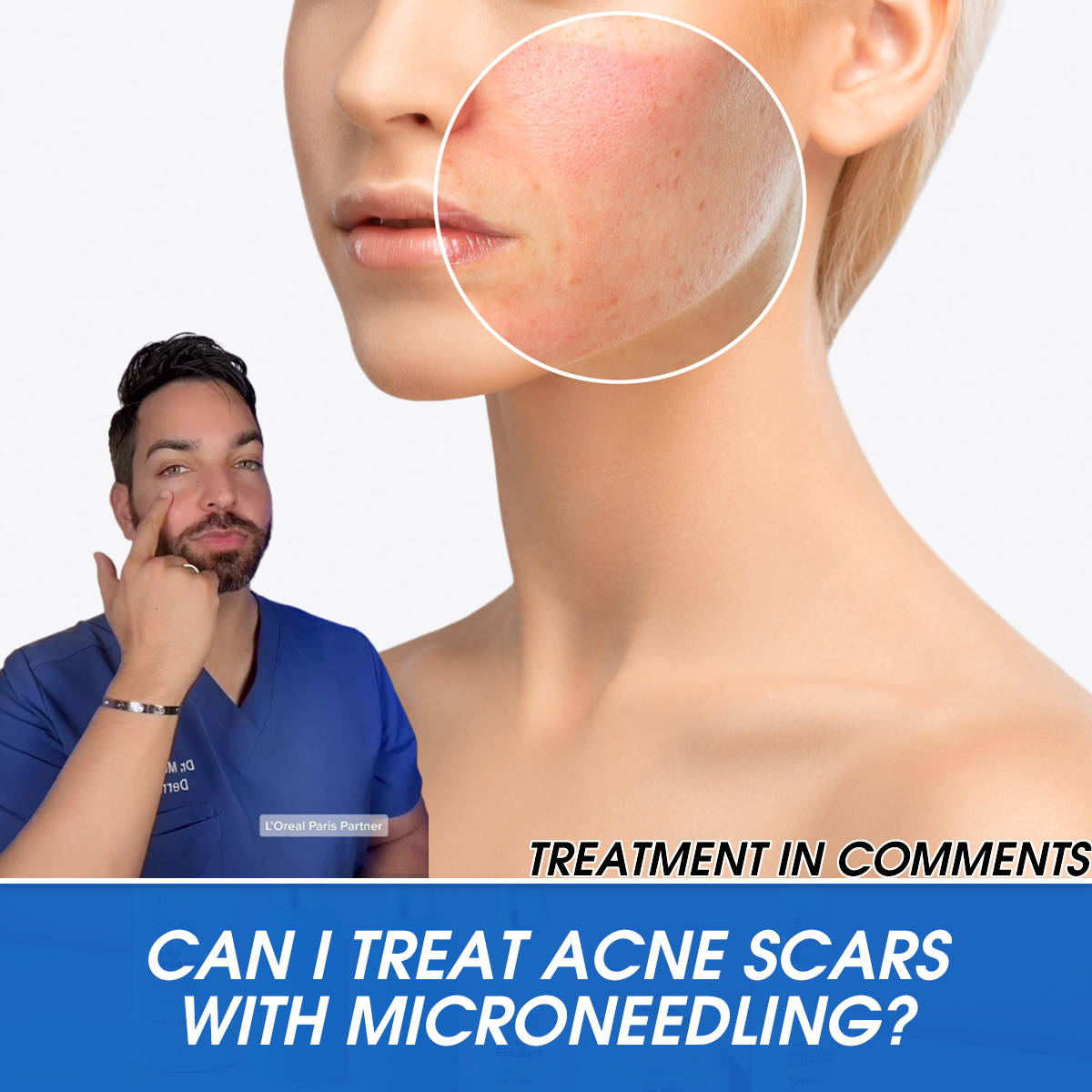
As if acne isn’t frustrating enough, sometimes you might have to deal with scars that pimples can leave behind. Acne scars can develop from cystic acne or from picking at your skin. Like other types of scars, those from acne can last for several months or even years.
If you’ve tried over-the-counter products to no avail, you might consider microneedling to get rid of your acne scars. Also called skin needling or dermarolling, this procedure is done by a dermatologist or skin care specialist to treat a variety of skin care concerns, including scars and wrinkles. It may also help with acne scars and clinical studies have shown overall positive results.
Curious about microneedling for acne scars? Read on to learn more about the procedure and how to discuss the effectiveness and potential side effects with a dermatologist.
Effectiveness of microneedling for acne scars
As the name suggests, microneedling uses fine needles that prick your skin. During the skin-pricking process, your skin produces more collagen in an effort to heal the small wounds from the needles.
The theory is that new collagen that’s formed will help smooth out your skin’s appearance, helping to fill in fine lines, wrinkles, and scars. To that end, skin needling may be used for:
- burn scars
- acne scars
- surgical scars
- melasma
- sun damage
- stretch marks
- sagging skin
- large pores
- hair loss
According to the American Academy of Dermatology, microneedling works best for depressed — not raised — acne scars. This has to do with the collagen-inducing effects. If you have raised acne scars, you already have excess collagen in the area.
Some studies have also noted that the effects of skin needling on acne scars are even better when the treatments are combined with vitamin C or PRP.
Unlike other minimally invasive skin corrective treatments, such as laser therapy, microneedling is considered safe for darker skin tones. This is because it doesn’t damage or remove the outer layer of skin. Microneedling is also considered safe for thin and sensitive skin as well.
Side effects of microneedling for acne scars
Initially, minor side effects are to be expected from this procedure. These include redness, bruising, and inflammation. However, these should clear up within a few days.
During the first few days after your microneedling procedure, you’ll want to avoid direct sun exposure and rigorous exercise. Exfoliants and alcohol-based skin products can also make side effects worse, so you should avoid these.
It’s also possible to experience acne breakouts after skin needling. However, these should be mild and clear up on their own. Avoid picking at your skin, as this can lead to further scarring.
The severity of microneedling side effects also depends on how you prepare for the procedure. Tanning or direct sun exposure can irritate your skin, making inflammation worse. Drinking plenty of water the day before and during the hours leading up your treatment can also reduce the chances of bruising and inflammation. You’ll also want to come to your appointment without any makeup on.
Unlike more invasive skin therapies, microneedling is considered quick. Many people choose to go back to work the day after their treatment, depending on their side effects. You can apply a lightweight powder if you want to camouflage any bruises or redness.
Your dermatologist may not recommend microneedling for your acne scars if you’re currently experiencing an acne breakout. It’s also not recommended if you have rosacea or eczema, as the procedure can worsen your symptoms.
You’ll want to talk to a doctor if you scar easily, as microneedling could potentially create more scars on top of the ones caused by acne. Finally, you shouldn’t get this treatment if you’re pregnant or have recently had skin radiation therapies.
Cost of microneedling for acne scars
Despite the fact that dermatologists perform microneedling, this procedure isn’t usually covered by insurance. This is because it’s considered an aesthetic treatment, and not medically necessary.
The exact amount you’ll pay for microneedling depends on your provider and your location. Dermapen estimates that the average microneedling session is about $300. If you need multiple treatments, you can expect to pay around this amount each time. At-home dermaroller kits can cost about $100, but you won’t see the same results.
According to DermNet NZ, moderate acne scars require three to four treatments. You might need an additional procedure or two for more severe scarring. Also, most people need to wait six weeks between treatments in order to allow new collagen to fully form.
The out-of-pocket costs of microneedling can get expensive pretty quickly, so it’s important to ask your provider about ways you can save money. Some offices offer membership discounts where you pay a certain amount of money per month and save over the course of a year. You might also ask about payment plans and financing. Be on the lookout for possible manufacturer rebates — these work similar to coupons.
Even though microneedling is an aesthetic procedure not covered by medical insurance, the overall costs are far less than surgery.
Before and after
A dermatologist can show you a portfolio of their microneedling work. It may take up to one year to see full results.

Acne scars can improve on their own over time. However, they’re still permanent unless treatment measures are taken. Some anti-aging serums and creams can go a long way in improving scars on your face, but they may not get rid of them completely. Plus, the effects wear off once you stop using the products.
A dermatologist can determine whether microneedling should be your next step. Before settling on microneedling, weigh all your options to determine the safest and most affordable approach while also getting the results you’re looking for.







